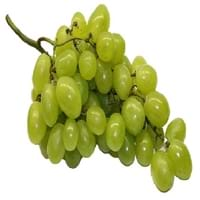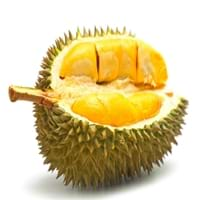Health Benefits
Cancer prevention, Kidney stone treatment, Prevents constipation, Treatment of alzheimer's disease
Anti depressant, Boosts immune system, Cancer prevention, Heart care, Reduces stress
General Benefits
Digestive aid, Improves eye vision, Maintains healthy cholesterol level, Treatment of migraine
Anti oxidant properties, Anti-inflammatory properties, Boosts immune system, Controls blood pressure, Controls blood sugar levels, Digestive aid, Flu treatment, Strengthens bones
Skin Benefits
Anti-aging benefits, Heals sunburn, Skin rejuvenation, Treatment of dark spots
Anti-aging benefits, Brightens and lightens complexion
Hair Benefits
Prevents hair loss, Regulates hair growth, Treatment of dandruff
Promotes longer and healthier hair, Protects hair
Allergy Symptoms
Anaphylaxis, Asthma, Breathing difficulty, Coughing, Drop in blood pressure, Hives, Skin rash, Stuffy nose, Swelling of mouth, tongue or lips, Wheezing
Diarrhea, Headaches, Hives, Nasal congestion, Red rash, Runny nose, Vomiting
Side Effects
Allergic reaction, Skin rash, Might slow down the process of blood clotting
Affects blood glucose levels, Nausea, Stomach pain
Best Time to Eat
As a snack in the late afternoon, Don't consume at night and before bed, Eat the fresh ones, avoid mixing with any other foods, don't eat after meal., Morning time (before lunch)
Along with meal, As a snack in the late afternoon, Don't consume at night and before bed, Morning time (before lunch)
Vitamin B5 (Pantothenic Acid)
Vitamin C (Ascorbic Acid)
Vitamin E (Tocopherole)
Not Available
Vitamin K (Phyllochinone)
Not Available
Lutein+Zeaxanthin
Not Available
Phytosterol
Not Available
Calories in Fresh Fruit with Peel
Not Available
Calories in Fresh Fruit without Peel
Not Available
Calories in Canned Form
Not Available
Calories in Pie
Not Available
Type
Berry
Tree fruit, Tropical
Season
Autumn, Summer
Monsoon
Varieties
Cabernet Sauvignon, Merlot, Pinot Noir, Syrah/Shiraz and Zinfandel
D24, D99 (Gob kecil), D123 (Chanee), D145 (Beserah), D158 (Gan Yau), D159 (Monthong), D169 (Tok Litok), D188, D189, D190, D163 (Hor Lor) and D164 (Ang Bak)
Inside Color
Light Green
Yellow
Taste
Sweet-Sour
Creamy, Sweet
Origin
Western Asia, Central Europe
South-Eastern Asia
Grows on
Vines
Not Available
Soil Type
Clay loam, Sandy loam
Clay
Climatic Conditions
Warm
Hot, Humid
Facts about
- If left alone, a grapevine can spread 50 feet and even more.
- There are more than 8,000 varieties of grape worldwide.
- They are available in 7 different colors: red, green, white, black, purple, blue and golden.
- 1 kg of durian contains 1350 calories which may cause weight gain.
- It may have a hyperthermic effect on the body, making you feel warmer.
- Study shows that durian has an ability to reduce infertility in men & women.
Top Producer
Spain
Thailand
Other Countries
Argentina, Armenia, Australia, Chile, France, Iran, Italy, Portugal, Romania, Turkey, United States of America
Indonesia, Malaysia, Philippines
Top Importer
United States of America
China
Top Exporter
Chile
Thailand
Botanical Name
Vitis vinifera
Durio zibethinus
Synonym
Not Available
Lahia Hassk
Subkingdom
Tracheobionta
Tracheobionta
Division
Magnoliophyta
Magnoliophyta
Class
Magnoliopsida
Magnoliopsida
Subclass
Rosidae
Dillenhidae
Family
Vitaceae
Malvaceae
Species
Vitis vinifera
D. zibethinus
Generic Group
Grape
Not Available
Compare Grape and Durian
It is important compare Grape and Durian as both the fruits have a different nutritional value. Their comparison can be done on the basis of their vitamin and mineral content, calories, benefits as well as characteristics, making it easier for us to choose the best fruit for our diet. Their general health benefits are as follows:
Grape Benefits: digestive aid, improves eye vision, maintains healthy cholesterol level and treatment of migraine.
Durian Benefits: anti oxidant properties, anti-inflammatory properties, boosts immune system, controls blood pressure, controls blood sugar levels, digestive aid, flu treatment and strengthens bones.
Fruits are also used as a remedy for various hair problems. The hair benefits of Grape are: prevents hair loss, regulates hair growth and treatment of dandruff and hair benefits of Durian are: promotes longer and healthier hair and protects hair. Some fruits are known to cause allergic reactions. The allergy symptoms of first fruit are: anaphylaxis, asthma, breathing difficulty, coughing, drop in blood pressure, hives, skin rash, stuffy nose, swelling of mouth tongue or lips and wheezing and the symptoms of second fruit are: diarrhea, headaches, hives, nasal congestion, red rash, runny nose and vomiting. Get sorted Grape vs Durian comparison with the help of fruit comparison tool by fruitvs.com.









